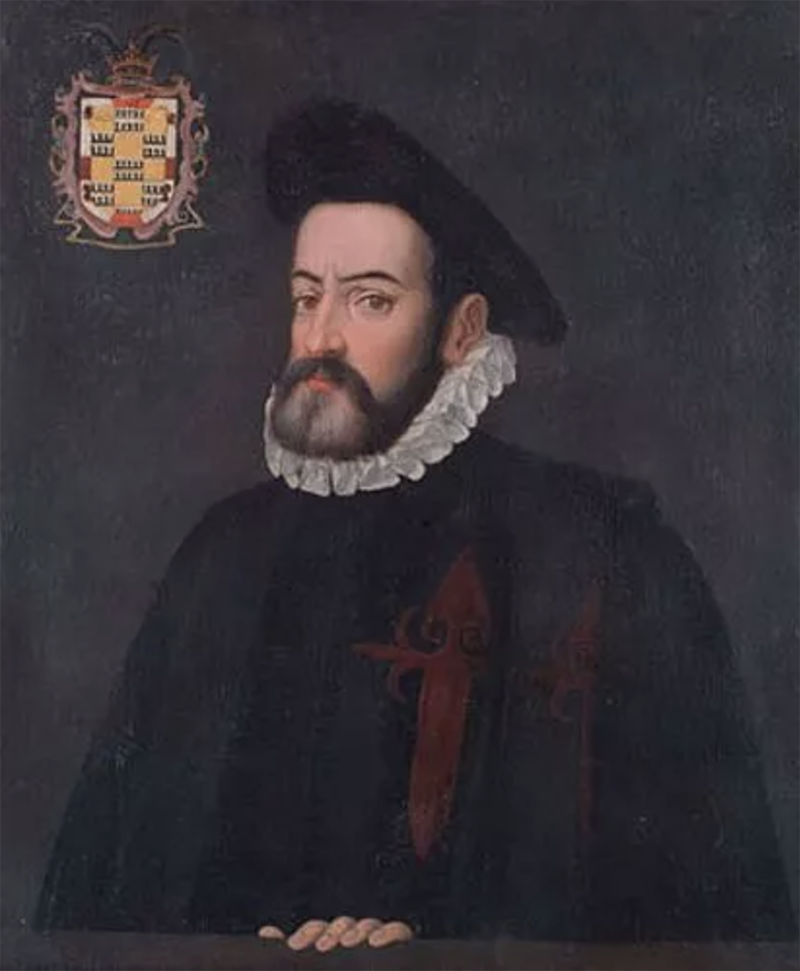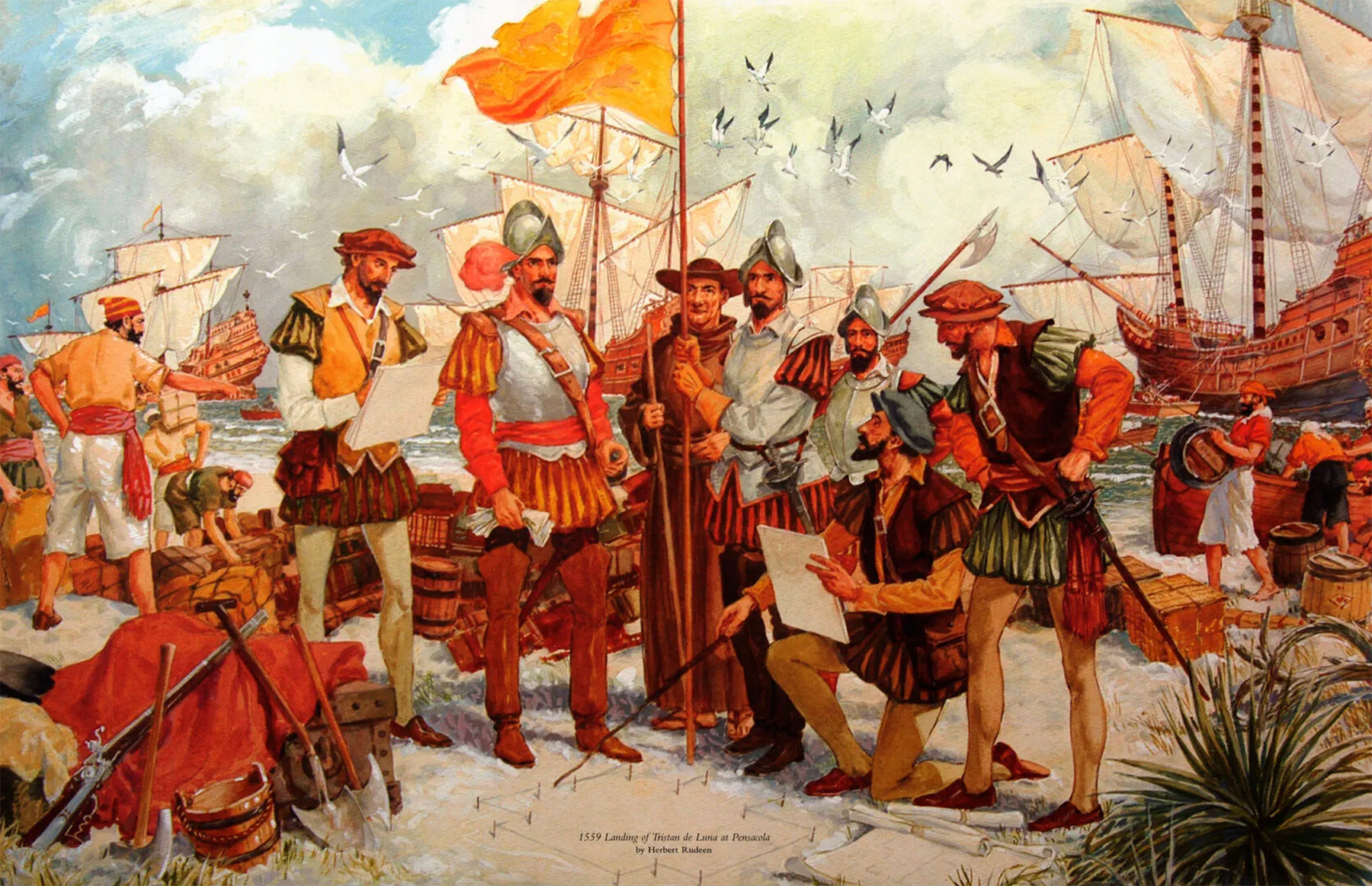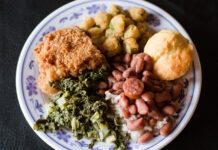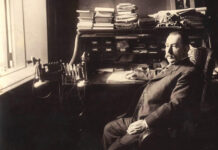
Had fate not intervened, Tristán de Luna y Arellano might well have succeeded in his mission. During the summer of 1559, his fleet of 11 Spanish ships, loaded with tents, tools, provisions, livestock, and 1,500 soldiers and settlers, entered Pensacola Bay, then known as the Bay of Ochuse. His orders were to establish a town on the northern Gulf, then blaze an inland path to the Atlantic coast and found another town there. The Spanish goal was to secure the southeastern region of interior North America and deter rival European powers and pirates from plundering the vulnerable sea lanes between Mexico and Spain.
Luna’s qualifications seemed unassailable. To begin with, he was of noble birth and well-connected; he counted as cousins both Juana de Zúñiga, the wife of Hernán de Cortés, and Luis de Velasco, viceroy of New Spain (Mexico). More importantly, he was a military veteran. In 1540, he had served as a captain with Vásquez de Coronado’s ill-fated search for the Seven Cities of Cíbola, and several years later, quashed an Indian rebellion in the province of Oaxaca.
Full of optimism, Luna landed on August 14 and christened the new settlement Santa María de Ochuse (at the site of present-day Pensacola). Unfortunately, a month later, a powerful hurricane swept over the area, wrecking all but three of his ships and destroying most of the provisions. Survival became paramount, but the sandy surroundings made it difficult. Desperate, Luna sent 200 men and four captains inland to find food at an Indian town called Nanipacana (located on the Alabama River in modern Monroe County), a small village consisting of about 80 dwellings and a few hundred inhabitants. The native people cautiously greeted the Spaniards and offered limited stores of beans, corn and squash.
Luna unaccountably dithered when he received this news, even though his mission and fortune hung in the balance. Then he became ill with a high fever and descended into delirium. A worried soldier wrote that he “said nonsensical and foolish things; and although he had been a widower for a long time, he called for his wife, Doña Isabel.” Months passed with no action. At Nanipacana, Luna’s nephew vented his frustration: “What is the governor doing that he does not come on here? I am sorry for the way he is acting, because he is my uncle and because of the occasion for people to say things about him.” Indeed, hungry soldiers, their suffering wives and children, the friars and the distant viceroy (via message by fast ship) all complained, hectored and offered advice. One of Luna’s modern biographers has speculated that his inaction was “the effect, no doubt, of the combination of the miasmic climate of the gulf coast, the short rations and the disappointment and anxiety under which he labored.” Another researcher has suggested that Luna suffered from malaria, which would explain his recurring fevers and hallucinations.
Relief vessels from Havana and Veracruz brought nowhere near enough provisions to sustain more than 1,000 people for any length of time, and in February of 1560, Luna finally agreed to move upcountry. When his starving multitude joined those already at Nanipacana, the alarmed Indians melted into the forest, taking all the food that they could carry. Hoping to find greater resources farther upriver, Luna dispatched a party all the way to the Coosa province (modern northwest Georgia) where they reported several small Indian towns with stored corn. But Luna’s wish to move the rest of his people north to join them provoked an outcry. The officers flatly refused, then the married soldiers petitioned for their families’ immediate evacuation to New Spain instead. Several others followed suit, including the expedition’s treasury officials and the tradesmen. It is difficult to imagine Cortés or Hernando de Soto tolerating such messy proceedings, but Luna merely ordered his people to keep quiet and wait 50 days. He may as well have asked them to wait a lifetime. One witness swore the governor “was not in his right mind,” that he “said foolish and mad things and did not act as he had been used to do.”
Increasingly distraught, the men requested a move downriver to Bahía Filipina (Mobile Bay, so named for Spain’s King Philip II). At least there, according to one officer, it would be possible to “maintain ourselves upon the shellfish” “until the fleet should come.” Luna reluctantly agreed, and the Spaniards pushed off in small boats in late June 1560. The trip was painfully hard. The boats drifted slowly with the current, twisted into low-hanging tree branches and grounded on sandbars. Weapons, equipment, people and horses fell overboard. One survivor recalled with a shudder, “Many of us had a difficult time; some lost their lives for the hunger grew so great, and we were so long in getting down the river, that those who escaped from this disaster consider themselves well off to find themselves wherever they may be.”

At Bahia Filipina, the Spaniards fanned out seeking mussels, clams, oysters, fish and Indian corn. Though they found some relief, Luna’s condition remained concerning. Jorge Cerón Saavedra, the maestre de campo, or chief of staff, wrote that “the governor’s indisposition was worse, for he had high fevers, was ill and did not attend to the business that came up.” The soldiers asked Cerón to take over, but he balked at mutiny.
In late July, the Spaniards returned to Pensacola Bay, which being deeper than Filipina was the preferred anchorage for the relief fleet. Shortly thereafter, several vessels arrived and took off a good many of the distressed settlers. Luna stayed with some soldiers and friars in hopes that he might yet fulfill his mission. But he had long since lost the men’s confidence. In October, the captains notified Cerón of what he already knew, that “since he [Luna] was ill he has not been fit to govern; for he has lacked and still lacks the balance of judgement required therefor, as is public and notorious.” They again begged Cerón to take charge and Luna to take to quarters. Luna insisted he could lead. As he later swore to the viceroy, “I performed my duty well and obeyed the instructions which were given to me.” But he complained that the officers and soldiers “joined against me together with the friars, not wishing to obey anything that I commanded.” Velasco gently replied, “it may be that you are suffering from such a decided indisposition that it would be wise for you to come away from that land to recover.”
And so it transpired. In April 1561, a ship brought Angel de Villafañe to replace Luna. The troubled governor departed for Spain along with all but 50 men. But they too abandoned Santa María de Ochuse shortly thereafter. Spain would not resettle the site until 1698. As for Luna, he went to Madrid and begged the King to reimburse his considerable expenses, to no avail. An old friend sheltered him during his final years, and he had the satisfaction of seeing his son and daughter well married. He died in Mexico in 1573, freed at last of crushing responsibilities, starvation, acrimony, fever and fiscal woes.
John S. Sledge is maritime historian-in-residence at the National Maritime Museum of the Gulf.






